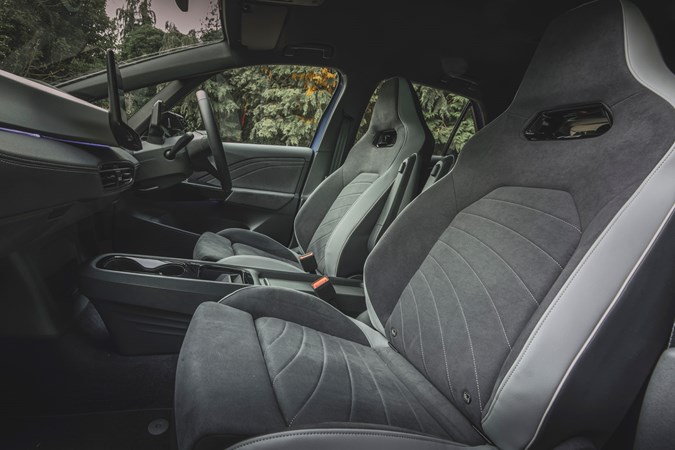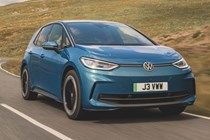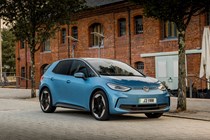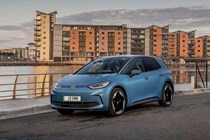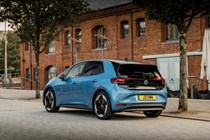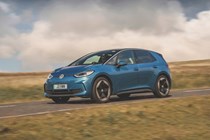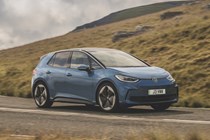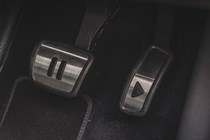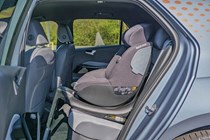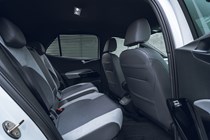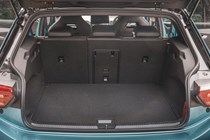
Volkswagen ID.3 interior, tech and comfort
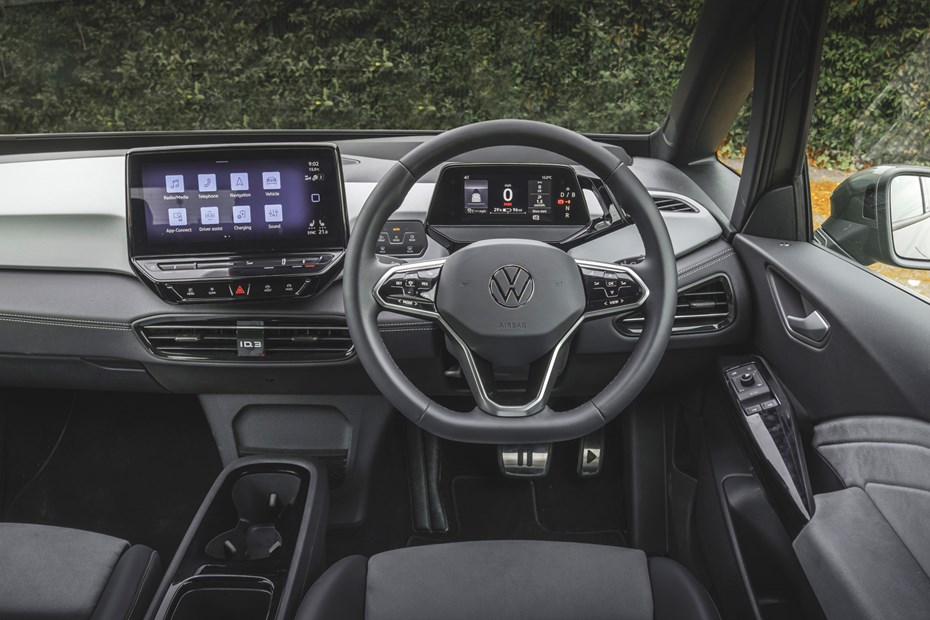
- Facelift has improved quality
- But fiddly touch controls remain
- Lots of standard equipment
How is the quality and layout?
The Volkswagen ID.3’s exterior design could pass for conventional – but you can’t say that about its cabin. It’s a stark departure from the brand’s previous generation petrol-powered cars, as there are almost no physical controls. All the major interior functions are controlled using the infotainment system and a collection of touch-sensitive buttons on the dashboard.
It looks sleek, but it’s an ergonomic nightmare. The touch-sensitive sliders for the climate controls, for example, aren’t backlit, which means you can’t operate them at night. Because the shortcut buttons lead you to menus in the infotainment system, you need to divert your attention away from the road and onto the screen to adjust everything from the heated seats to the driver assistance technology.
Even the demister is on a touch-sensitive switch, mounted awkwardly on a panel with the headlight controls behind the indicator stalk. That means you need to thread your hand between the stalk, the wheel and the infotainment screen to operate it, which is needlessly fiddly when you’re already dealing with impaired visibility.

The Skoda Elroq’s dashboard, with its backlit physical shortcut buttons, is far more user-friendly. However, the Vauxhall Astra Electric is even simpler to use. It has physical controls for all its cabin controls – including an old-school volume knob.
Although the ID.3’s facelift did nothing to address our ergonomic complaints, Volkswagen did improve the quality of the car’s interior. There’s a lot more soft-touch plastic on the dashboard, for example, which goes some way to justifying its steeper price tag over the MG 4 EV.
But there are still some areas where it lags behind its rivals (and the Golf for that matter), such as the door panels where you’ll find hard, scratchy plastic. It’s undoubtedly better than the original car, but the related Cupra Born feels plusher still.
Infotainment and tech
The facelifted ID.3 originally featured a 10.0-inch infotainment system, but as of 2025 all models now get a 12.9-inch touchscreen. The menu design is logical, but you do need to take the time to familiarise yourself with the screen and the sheer number of functions it controls, especially if you’re stepping out of an older car.
The instrument display is attached to the steering column, rather than the dashboard, which means it moves up and down with the steering wheel when you adjust it. That means you get the same view of the screen irrespective of the steering wheel position, which is great news for incredibly tall or incredibly short drivers. It’s far more accessible than the Peugeot e-308’s i-Cockpit system.
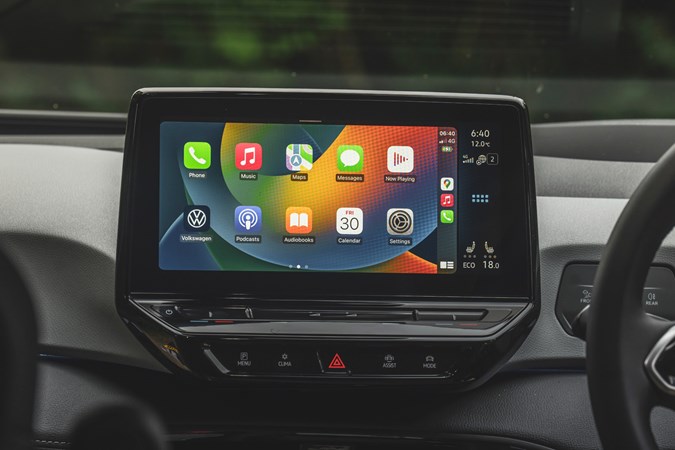
It only shows a minimal amount of information, but its pared-back design suits the ID.3’s futuristic interior well. You get a digital speedometer in the middle, flanked by windows that show navigation instructions and info on your safety tech. You can also choose to focus on any of these windows by cycling through them with the controls on the wheel.
Volkswagen skirts around our usability complaints of its touchscreen-led interior with its ‘Hello ID’ voice control system. You push a button on the wheel to activate the system and then you can control most of the interior functions (such as the climate control, heated seats and demister) with a series of prompts. This sounds great in theory, but the technology isn’t error-free – and it doesn’t cope well with regional accents.
Comfort
- Quiet and refined
- Comfortable seats
- Roomy front and rear
The ID.3’s front seats are very adjustable and have wide bases, which makes it easy to get comfortable. They were updated as part of the facelift and now feel every bit as premium as those you’d find in a Golf. They offer excellent support, too, even in more vigorous driving.
The separate armrests for the front two passengers is a neat touch as well, and are usually only found on much larger and more expensive cars. The rear is also spacious with a well-shaped backrest which makes it a comfortable car for four – and five at a push in 59kWh models – thanks to its flat floor.
